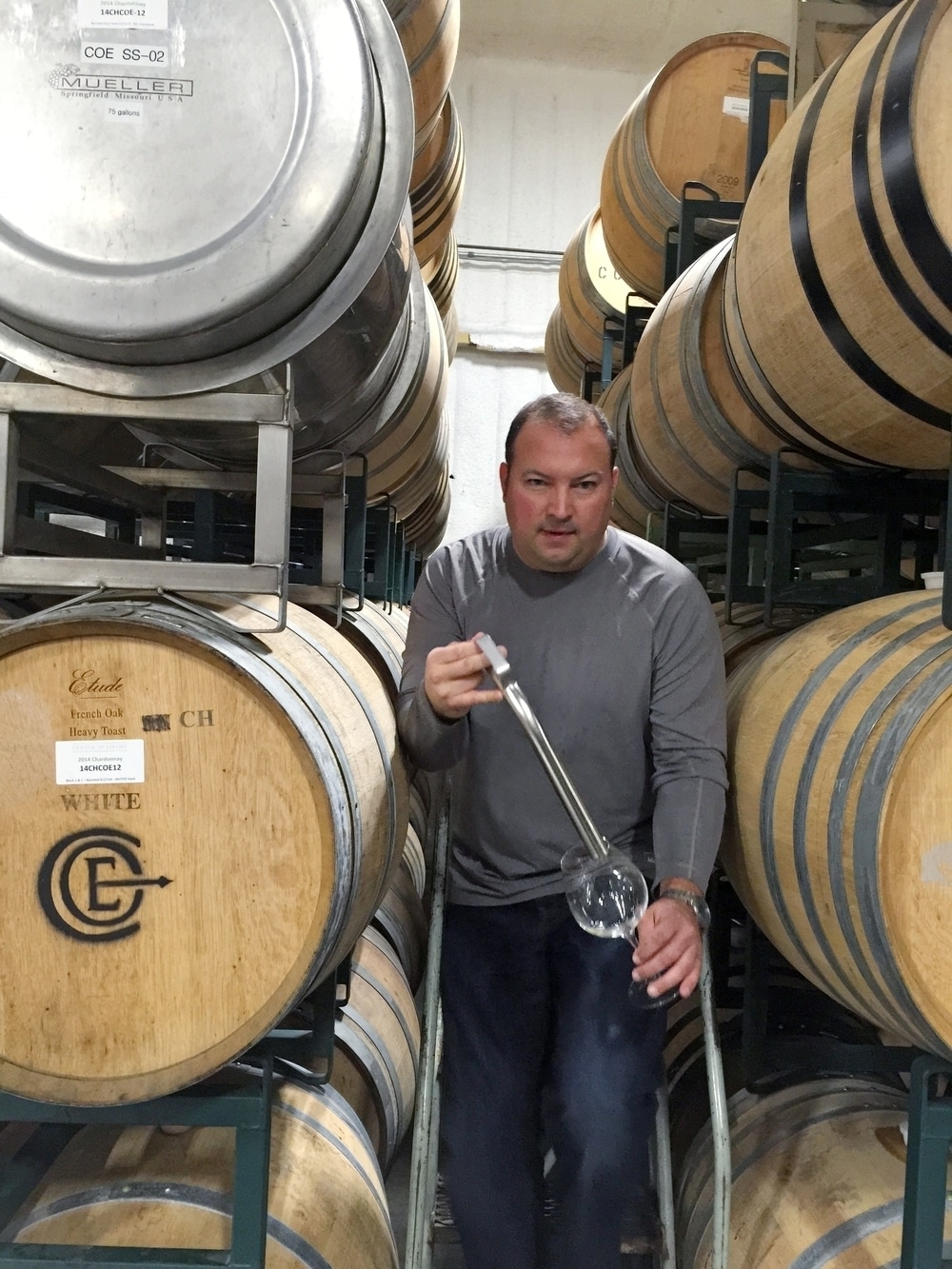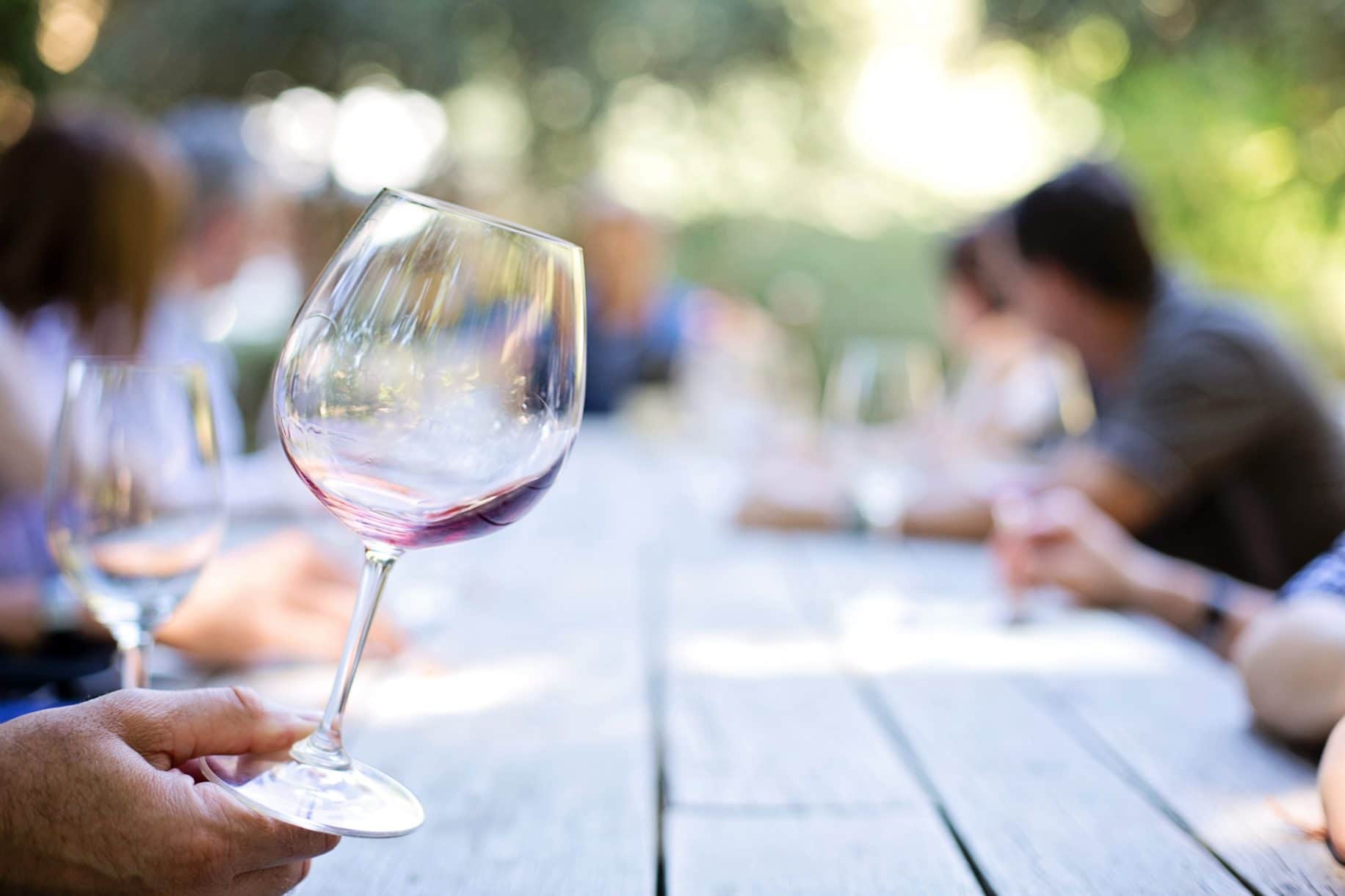Nathan Carson’s love affair with wine started with German Rieslings. He began by working in restaurants and eventually landed a job at Claiborne and Churchill Winery. His career included stints at Tolosa and EOS. His quest to create perfectly balanced Pinot Noirs led him to making wine in both North and Central Coast as well as Oregon. Currently partnered with Mike Sinor at the Center of Effort Wines, he crafts wines of effortless elegance, phenomenal purity and regional distinction.
Center of Effort wines made it onto my Top Ten Edna Valley and Arroyo Grande Wineries! Read more here.
Why did you become a vintner/winemaker?
I started in wine production when I was about 22 or 23 years old, after studying marine science while working in restaurants to pay for school. Wine was an important part of those restaurants, and I found several mentors among the more experienced wait staff, who ignited my interest. When I moved to Santa Barbara and was working in Montecito, I met the owners of a local winery whose wines I knew well and respected. I begged myself into a spot with them, promising to clean tanks out or roll barrels around. They put me to work a few days a week, and I quickly knew that this is what I wanted to do. Winemaking blends together science, agriculture, art, history, and human interaction in ways that few other disciplines do.
If you weren’t a vintner/winemaker what would you be and why?
I’m really interested in craftsmanship of many kinds. I love farming, gardening, and agriculture. I could see myself working in any kind of role that allowed for creative satisfaction of seeing what a day’s efforts produce. That could be baking, kitchen work, building, or some supporting role.
What is your greatest strength as a vintner/winemaker?
A variety of experience – in my career, I’ve worked on huge wine blends for corporate clients, and also in small family businesses – I think I draw from each of those viewpoints when I approach a new challenge. This has made me a pragmatist. In a discipline where there is a lot of received wisdom, many make efforts to emulate the success of others by copying techniques or repeating tropes – often without critical thought about what truly drove that success. I tend to question everything and think about what is behind the success of a tool or technique, and how it can fit my toolkit.
What is your biggest weakness as a vintner/winemaker?
I’m having to learn to delegate. I can’t possibly do everything by myself, and trusting the team takes time and communication.
What’s the one mistake you made in the cellar you would never repeat?
When I first became a winemaker at a large facility, my job was to write work orders for the crew to execute. I asked the pumpover team to perform a screened-sump pumpover in a tank which had just been received 48 hours before, per the client protocol. The fermentation had not yet separated the juice from the cap. As a result, the guys were manually carrying bucket after bucket of heavy 30 gallon bucket grape must from the bottom valve up to dump it into the top manway door. I learned that I can’t just dictate something that is not executable in the cellar. And I learned the value of a team that knows that it is okay to question my judgement when it doesn’t make sense.
What is your proudest achievement?
Everytime that I am at a restaurant and see a bottle of wine on the table – so great to take a tiny part in other’s occasions, their family, celebrations, and their friendships.
What was your scariest vintage to date?
v.2011 was rough. Less than one ton per acre on our Pinot Noir vines, due to frost and rain during flowering. Because the poor yield was due to poor flower set, the clusters were ragged, uneven, and crop levels erratic. It was impossible to make good decisions for an entire block regarding thinning, leaf pulling, irrigation, as the situation changed from vine to vine, or even cluster to cluster. In the end, we made a blend we were happy with, but it was only eight barrels from our entire cellar. We declassified the entire remainder of the vintage. That hurt!
What is your favorite saying?
“Even the smallest acts of creation are sacred.”
Humans have the inborn desire and ability to imagine and to create. Whatever it is that you can do, whatever your skill is, it should be done as well as you can. Even failures are important to the path of learning, process is often as important as result.
What is your most prized possession?
Honestly, I value experiences way above possessions. I love having a garden, but that is more because of the satisfaction of growing things and making meals for friends. When I was in college, my apartment was destroyed by a hurricane. I only managed to salvage one duffel bag of my things from the ruins. That experience taught me that you can always get more stuff, and that has been the most valuable lesson for me. It was so clear immediately as I stood there in the rubble, any sense of loss departed immediately, and I felt really free. So lucky to have had that early in my life!
What’s the oddest thing about you?
I don’t really like chocolate or sweets very much.
What song best sums you up?
‘This is the day’ (The The).
What is your favorite memory?
Favorite wine memory is being at Domaine de La Laidière in Bandol. Freddy the proprietor told us about the work of his family in restoring the domaine after the ravages of WWII. He pulled a bottle of the 1950 wine from the family cellar – this was the first wine produced after the war, and though it was definitely showing age, it was certainly still alive!
Which one of the five senses is your strongest?
Scent and memory, which are very intertwined.
What is your biggest motivation?
Just to do the work that comes to our team as well as we are able, and to develop the strength of the team. Use everyone’s strengths to get further than we can alone.
Which bottle of wine would you choose to be stranded with on a deserted island?
Maderia – it probably will hold up pretty well to the ravages of time and poor storage conditions.
What is the difference between good and great wine?
Great wines additionally have story and context, provenance and authenticity.
Name any individuals you would like to have dinner with.
Jiro Ono – I admire his long and ongoing dedication to improving his craft, knowing his contributors, and serving his guests. I’d love to see and taste that in action.
Who is your winemaking hero?
Not exactly a hero, but I’d have to say Richard Graff, from the beginning days of Chalone. He seems to have touched so many of the winemakers and winegrowers that I learned from. He was a force for quality in the Central Coast and the Edna Valley AVA and advanced technique and perception of quality potential here. I never met him, but all of us winemakers on the Central Coast and beyond have inherited a lot from him.
What does the concept of “balance” mean to you?
Tension between elements in a wine. Fruit character balanced by savory notes, tannin, acidity, alcohol and richness all in proportion with one another.
What is the one thing that you want people to remember about your wine?
It is a product of a place and a talented team – not any one person.
Best comment made about your wine? Was it by a consumer, trade or press?
“If Nathan didn’t make it, I’m not drinking it!” – Aunt Vivian.
Sometimes the press finds things in the wine that are quite different than what I think about it, but that is helpful in some ways, and I can appreciate where they are coming from. By definition, a review is just a momentary snapshot of the wine, and while entirely valid, winemakers have a different relationship to the wine, as they have known it through all the stages of its life, and have an idea of where it is on the arc of its development, and a sense of the future trajectory.




